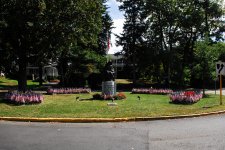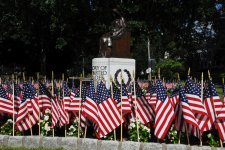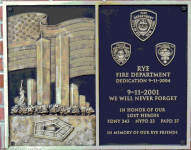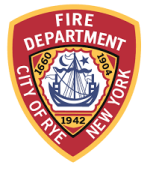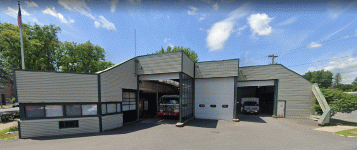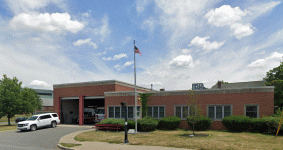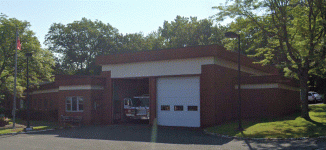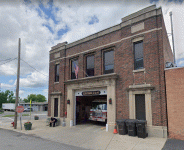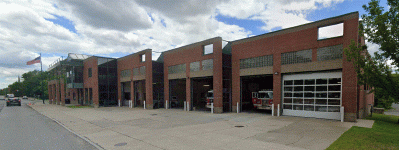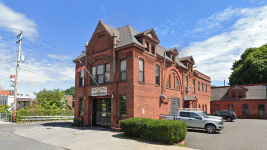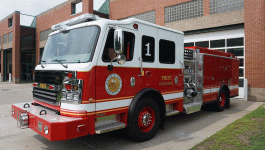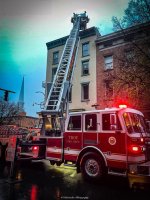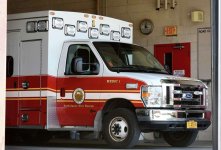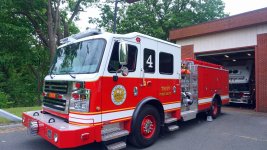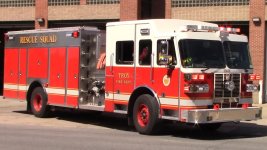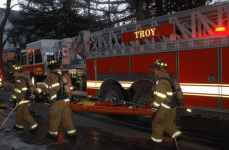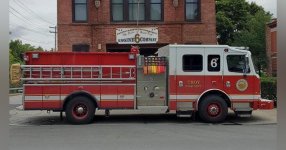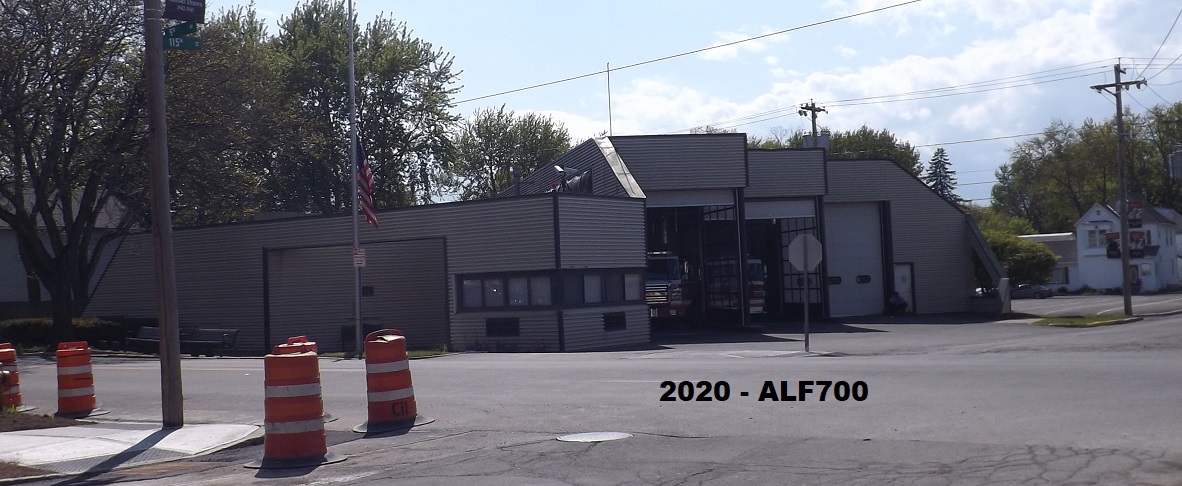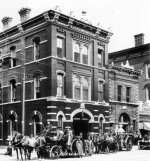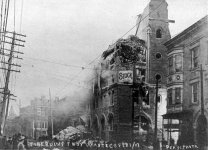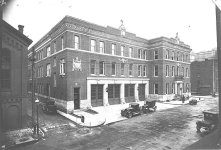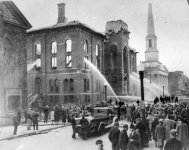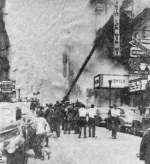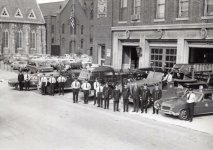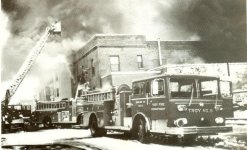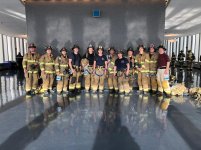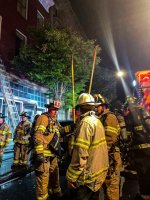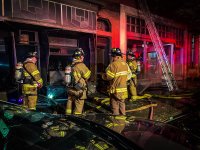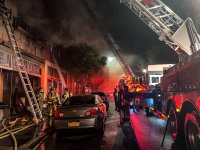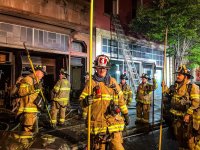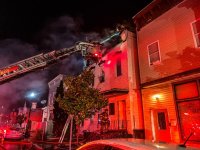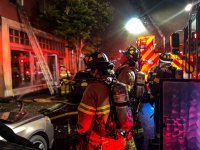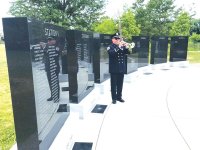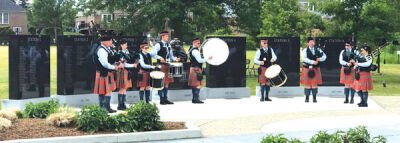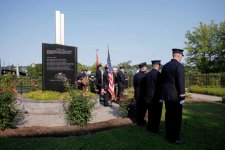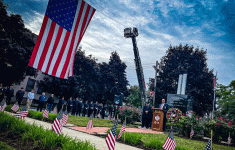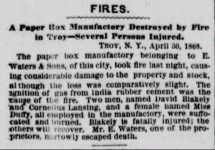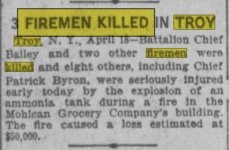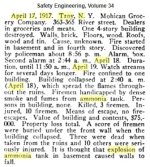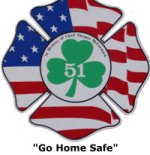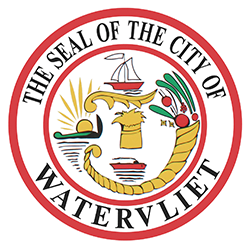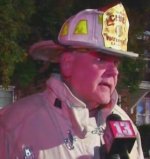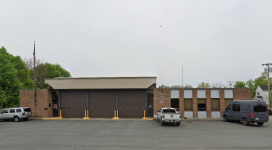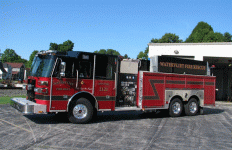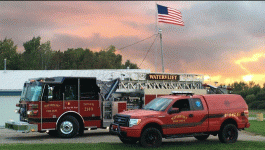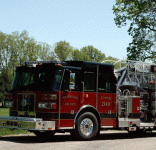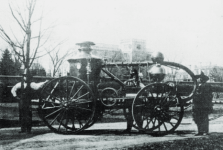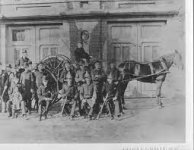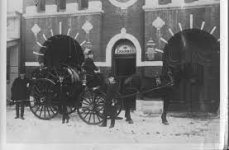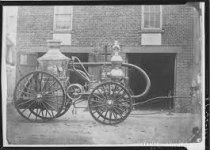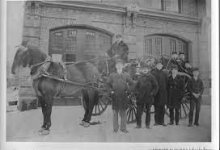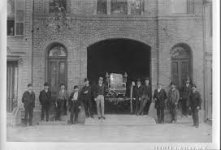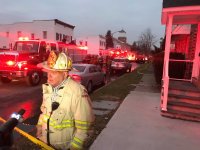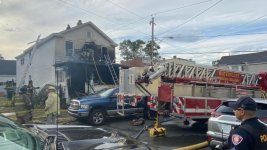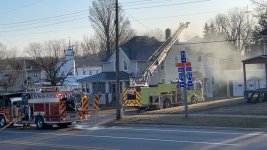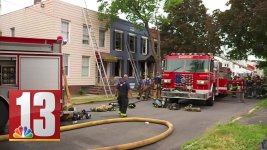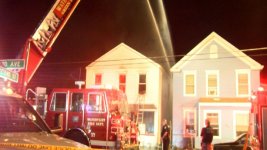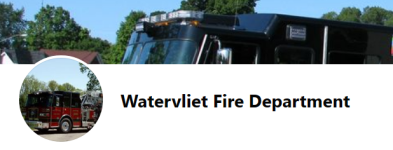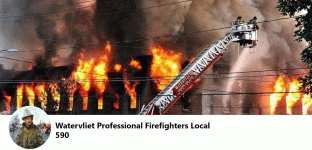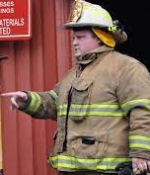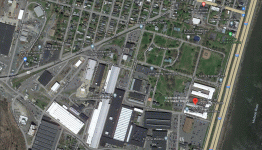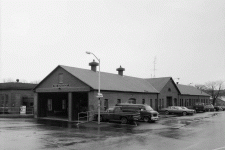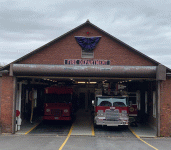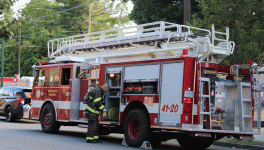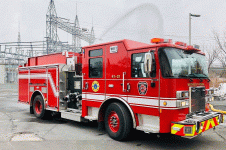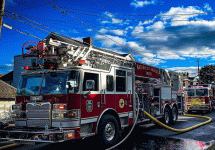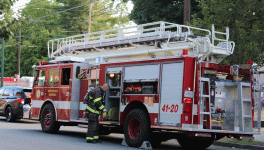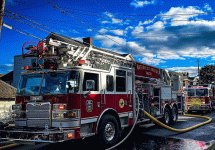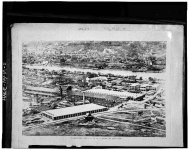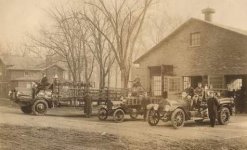TROY
Volunteer Fire Company History
 Premier Engine Company
Premier Engine Company, organized 1798; discontinued from service, August 23d, 1861; disbanded September 5th, that year. First engine-house on the south side of the courthouse; the engine was subsequently housed in a wooden building on the north side of Center Market; and in 1843 at No. 21 State Street.
Neptune Engine Company No. 2, organized June 20th, 1803; discontinued August 1861; disbanded September 5th, that year. Engine-house on the north side of Center Market in 1828; and in 1843 at No. 23 State Street. The company paid the tuition of a large number of children attending the Lancastrian and other schools in the city.
Washington Volunteer Fire Company, incorporated May 26th, 1812. First engine-house west side of Fourth Street, about seventy feet north of Fulton Street; after April 1820, the apparatus was housed in a building on the north side of the market-house lot on the north-west corner of Third and State streets; in 1823, it was kept in a building in the shipyard, on the southwest corner of River and Elbow (Fulton) streets; in 1824, it was again housed in the building near the northwest corner of Third and State streets. In December 1843, the engine was placed in the brick engine-house, at No. 25 State Street, on the site of the Second Precinct Station-house.
Engine Company No. 3, organized February 1st, 1821; changed to a hose company in December 1834 and became the
Franklin Hose Company.
Engine Company No. 4, organized January 6th, 1825; changed to a hose company October 7th, 1837, subsequently known as the Eagle Hose Company No. 10. On July 3d, 1845, this became the
Eagle Engine Company No. 10.
Torrent Engine Company No. 4, organized August 2d, 1838; disbanded May 20th, 1841; reorganized September 1st, 1842; disbanded August 3d, 1843; reorganized November 2d, 1843; discontinued August 1861; disbanded September 5th, that year. The engine-house was on Congress Street, at Ida Hill.
Empire State Engine Company No. 5, organized March 1st, 1821. The engine-house was at the Iron Works. (See
Edmond Stanton Steam Fire Engine Company No. 6.)
Hope Engine Company No. 6, organized May 20th, 1826. The engine-house was on the northwest corner of Brunswick Avenue and Washington Street, Albia. (See
Hope Steam Fire Engine Company No. 7.)
Niagara Engine Company No. 7, organized May 27th, 1828. Engine-house on South Market lot, northeast corner of Second and Division streets. (See
Jason C. Osgood Steam Fire Engine Company No. 3.)
Cataract Engine Company No. 8, organized August 2d, 1832; disbanded September 10th, 1851; reorganized and served until disbanded September 5th, 1861. The engine-house was at No. 12 Federal Street.
Rough and Ready Engine Company No. 9, organized September 21st, 1837, as the
Hydraulic Engine company No. 9. In 1863, adopted the name of Rough and Ready Engine Company No. 9. The engine was housed at No. 9 River Street, near State Dam. In 1865, the company reorganized as the
Rough and Ready Hose Company No. 4. (See
Charles Eddy Steam Fire Engine Company No. 4.)
Lafayette Engine Company No. 10, organized August 15th, 1839. Engine-house on Ida Hill. (See
F. W. Farnam Steam Fire Engine Company No. 5.)
Eagle Engine Company No. 10, organized July 13th, 1845. Members resigned September 16th, 1847; company reorganized March 14th, 1848; became
Eagle Steam Fire Engine Company No. 2 on December 20th, 1860. The engine was housed at No. 14 Federal Street. (See
Hugh Ranken Steam Fire Engine Company No. 2.)
Aetna Engine Company No. 12, organized in 1846, and in 1857 became the
Hibernia Engine Company No. 12.
Hibernia Engine Company No. 12, in 1857 known as the
Aetna Engine Company No. 12; company discontinued in 1863. The engine-house was on the corner of Fifth and Madison streets.
Good Intent Engine Company No. 13 (independent), formed in 1850 and disbanded in 1856. The engine-house was on Batavia Street.
Franklin Hose Company No. 1, organized December 18th, 1834, from
Engine Company No. 3. On January 1st, 1835, it took the name of Franklin Hose Company No. 1. The hose-house was on Franklin Street, near the courthouse.
Phoenix Hose Company, organized in 1840; discontinued in 1851.
General Wool Hose Company No. 2, organized February 1st, 1859; discontinued in 1861. The hose-house was at No. 19 State Street.
Union Hose Company No. 3, organized February 1st, 1859; existed for about a year. The hose-house was at No. 7 Hoosick Street.
Hall Hose Company, organized December 1859; discontinued January 1st, 1871.
J. C. Taylor Hose Company No. 3, formed in 1860. (See
Charles Eddy Steam Fire Engine Company No. 4.)
Hook and Ladder Company No. 1, organized February 16th, 1826; discontinued in 1857. The truck-house was in a building on the north side of Center Market; in 1843, it was at No. 27 State Street.
Union Hook and Ladder Company No. 2, organized April 5th, 1832; discontinued in 1874. The truck-house was at the Iron Works.
Trojan Hook and Ladder Company No. 3, organized February 5th, 1835. The truck-house was at No. 14 Federal Street; it burned May 10th, 1862. Subsequently housed at Cozzens' Northern Hotel, and afterward at a brick engine-house on State Street.
These are excerpts from
Troy's One Hundred Years 1789-1889, compiled by Arthur James Weise, M. A., and published in 1891 by William H. Young of 7-9 First Street in Troy.
1862 fire deadly and devastating
But conflagration that ignited 150 years ago couldn't stop Troy from bouncing right back
Kenneth C. Crowe II
May 9, 2012
15
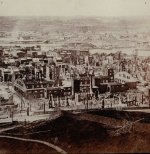
1of15A view of downtown Troy, N.Y. before the Great Fire made from a historical image at the Rensselaer County Historical Society offices May 9, 2012. (Skip Dickstein / Times Union)SKIP DICKSTEIN
TROY — Gale force winds ripped across the city on May 10, 1862, a Saturday afternoon.
A train had steamed out of the downtown
Troy Union Depot and was crossing the wooden covered Green Island Bridge when sparks from the engine set the structure on fire.
It wasn't long before the burning bridge's flames were whipped up by the winds and burning pieces of the bridge were flying into downtown Troy.
A firestorm swept the city of wooden buildings.
By nightfall six hours later, downtown's 4th Ward was a charred landscape of 75 acres where 670 buildings once stood. Despite the conflagration that consumed downtown only about eight people died.
"I turned up Grand Division St. and at the
Troy City Bank saw the belfry of the 6th St. Church blazing. The air was full of smoke and cinders," a Troy woman, Cousin Aurora, wrote her Cousin Allie on May 12, 1862, two days after the blaze, in a letter now in the collection of the
Rensselaer County Historical Society.
"All were working with pails putting out the cinders that lit on the roofs of the houses, barns and sheds of that block," Cousin Aurora continues.
While the country continues to mark the 150th anniversary of the Civil War, Troy is marking the sesquicentennial of its Great Fire, an event that reworked its urban fabric.
The stories of Gurley, Cousin Aurora and other 1862 residents are told in a new Rensselaer County Historical Society exhibit, "The air was full of smoke and cinders" — Troy's Great Fire of 1862.
The exhibit opens at 5:30 p.m. Thursday, on the 150th anniversary of the Great Fire.
"What was going on in Troy in 1862. What happened during the fire and what happened after the fire" is what is addressed, said
Stacy Pomeroy Draper, RCHS curator, who organized the exhibit.
Putting the Great Fire's story together means touching on the lives of people who survived or died in the fire. RCHS is near to figuring out Cousin Aurora's identity.
For those who perished, such as
Zenas Carey of Grand Division Street and
Margaret Murray of Eighth Street, the exhibit has their death certificates. Both say they died accidentally. And there's the picture of
Ranson Haight's tombstone that reads "It was God's will."
Gurley withdrew about $500, the equivalent of two year's pay, from the bank as the fire burned, allowing the company to begin rebuilding immediately.
The consuming flames didn't advance wooden building by wooden building, Draper said. The strong winds blew burning pieces ahead causing the fire to jump throughout downtown. Part of the exhibit includes melted glass recovered from the flames and period-related items.
Draper described the city's 1862 fire ravaged scenery as equivalent to the devastation left behind by natural disasters.
The damage was estimated at $3 million in 1862. The website MeasuringWorth,com estimated the cost of rebuilding would be equivalent to roughly $7.82 billion today.
Troy is often referred to as the Silicon Valley of the 19th century due to its cutting edge technology and wealth. It was here that horseshoes were produced by the millions for the Union Army cavalry; the iron plates were made for the U.S.S. Monitor; and other war supplies were made.
As the city burned, the telegraph wires heated up with messages for help, Draper said. Fire departments from Albany, Waterford, Greenbush, West Troy and Lansingburgh came by steamship and railroad to join the fight.
Troy's firefighting battle was successful, Draper said due in part to technology. The city had three of the newest steam engines for firefighting. Those engines were moved around downtown to battle the fire, Draper said.
Fire Capt.
Charles Green rescued three women in hoop skirts who were trapped by the flames, Draper said.
Rebuilding Troy began immediately. The Green Island Bridge, the first railroad bridge to span the Hudson River was reconstructed by July 1862, Draper said.
The Civil War was a boom time for Troy, said
P. Thomas Carroll, executive director of RiverSpark Hudson-Mohawk Heritage Area.
"Since it was in the middle of the Civil War, they rebuilt the city very fast," Carroll said.
One impact of the fire was that
Rensselaer Polytechnic Institute moved from downtown up the hill after its buildings were destroyed, Carroll said.
By November 1862, Draper said that most of Troy's downtown lots either had completed buildings or were in the process of rebuilding.
"The city didn't stop. The look of the city changed. Buildings were brick and metal," Draper said.
Draper will lead a walking tour of downtown Troy to describe the fire at 10:30 a.m. Saturday. The cost is $5 per person and free for RCHS members. The tour departs from the market table at the Troy Waterfront Farmers' Market.
A train had steamed out of the downtown Troy Union Depot and was crossing the wooden...

www.timesunion.com
